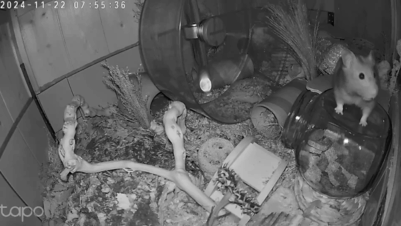Fish keeping is a popular and growing hobby, with estimates ranging from 117 to 134 million ornamental fish being kept across at least 4 million fish-owning households in the UK. Fish keeping encompasses outdoor pond fish (koi, goldfish), tropical freshwater fish (neon tetra, dwarf gourami) and tropical marine fish (common clownfish, domino damselfish).
Aquarium fish can also fetch a high price at market: uniquely patterned koi can reach over £1,000,000 at auction; a colour morph arowana, Osteoglossum bicirrhosum, once sold for $400,000 (approximately £330,000); and rare species of marine angelfish reached bids of $30,000 (approximately £25,000).
With a growing number of budding home aquarists prepared to pay a great deal of money for their fish and looking to invest in their health and well-being, veterinary surgeons are more and more likely to be faced with questions on fish health and dispense advice on fish care and well-being.
What advice should vets give to worried fish owners?
Fish live in a medium that is essential to their existence: water. The quality and health of this is where the fish keeper needs to start to provide the strongest foundation for optimal care (Figure 1). All good advice for worried owners should start with water quality and water conditions, stocking density and feeding rate. Fish owners can be encouraged to bring in a photo of their fish, if it is tricky to physically bring the individual in to the practice, and to talk about the aquarium conditions and husbandry provided.

New tank syndrome
Many health problems arise because the water in a home pond or aquarium is not left to mature and too many fish are added too quickly to a “raw” set-up. An aquarium or pond is a biological, living system. Fish added into this system become part of the cycle, producing waste that is removed by the bacteria that live in a mature filtration system and in the substrate. A new aquarium has none of these biological processes in place and so the fish keeper must stock such a system gradually. It can take up to two months before an aquarium has the full biological capacity to remove waste normally.
Common symptoms of “new tank syndrome” include:
- Lethargy and reluctance to feed
- Fish gasping for air at the water’s surface
- Vigorous gill movement and intense respiration
- Sudden, seemingly unexplained deaths of fish
- Unusual or abnormal orientation in the water column (eg a fish rolling on its side)
- Noticeable blood-red fin veins and gills
Too much food, too many friends
A common health and welfare problem seen in home aquaria is overcrowding and feeding fish too much and too often. Many fish have evolved to consume food in small amounts as and when it is located within their habitat. The feeding of a large amount of processed fish flakes or pellets in one go can cause water pollution and a build-up of toxic ammonia that, in large concentrations, can kill the fish in the tank.
Feeding regimes should be maintained in line with the fish’s evolutionary history; aside from a few species that are predators engulfing large single meals (eg large cichlids such as oscars, Astronotus ocellatus, or pike cichlids, Crenicichla spp.) most fish available for the home aquarium need to eat little and often. Two to three small feedings of flakes or pellets, all consumed within a few minutes, will keep fish at a healthy body condition, provide behavioural stimulation and prevent poor water quality.
Diet of the fish being kept should always be investigated so that correct nutritional requirements are provided. Some fish have particular dietary needs in the aquarium; for example, the aforementioned oscar has an essential need for dietary vitamin C.
Pet fish can suffer from being overweight; goldfish fed too much and kept in restricted conditions that limit exercise can build up large fat deposits. Abdominal swellings and a ballooned or bloated appearance (with scales sticking out like a pinecone) is not going to be a case of a fish that needs to go on a diet, but rather of a more serious bacterial infection. Such symptoms need to be checked out by a veterinary surgeon and changes to water conditions and filtration are required.
Overcrowding in an aquarium depletes the amount of dissolved oxygen available and can cause fish to gasp at the surface. Overcrowding will increase ammonia, nitrate and nitrite concentrations in the water as filtration is less efficient and so an increase in water changes is required. Overcrowded fish will be stressed, show signs of aggression or fear and may hide away or attempt to flee from rivals.
Common symptoms of behavioural stress in aquarium fish include:
- Loss of normal colouration. Fish are either pale and “washed out” or show dark lines or spots that are not normally present
- Damaged and ragged fins caused by aggression (fin nipping) from tank mates
- Hanging at the water’s surface or resting lethargic on the substrate
- Constant hiding away or reluctance to explore the aquarium
- Clamped fins (held close to the body)
- Loss of body condition and appetite
Again, such advice is species-specific; many aquarists of Rift Valley cichlids (eg Lake Malawi and Lake Tanganyika cichlids) maintain high stocking densities to replicate the natural systems and natural behavioural ecology of these species.
Check on your water conditions and quarantine new arrivals
Common fish disease can be brought on by changes in environmental parameters that lead to stress. For example, white spot (Ichthyophthirius multifiliis) is a parasitic infection that is common in freshwater fish and is generally caused by fish being stressed by a change in their environment (eg suddenly experiencing a change in water temperature). White spot is easily introduced into an aquarium with new arrivals placed into a home aquarium without any quarantine, and can live on plants too.
Note that marine white spot/“marine ich” (Cryptocaryon irritans) is a different type of disease caused by a ciliate parasite. Marine white spot spends a longer time encysted on the fish compared to freshwater white spot, and the use of copper-based treatments is problematic due to marine fish often being housed in reef aquaria containing invertebrates (copper-based treatments are lethal to invertebrate marine life). As such, it is essential that all new fish be quarantined before they are added to a marine reef system, otherwise it can take up to three months for a reef tank (kept free of all fish) to be clear of marine white spot.
Owners should be encouraged to maintain safe water parameters and do regular checks of water chemistry to ensure that levels of ammonium and nitrites are not building up to dangerous concentrations.










